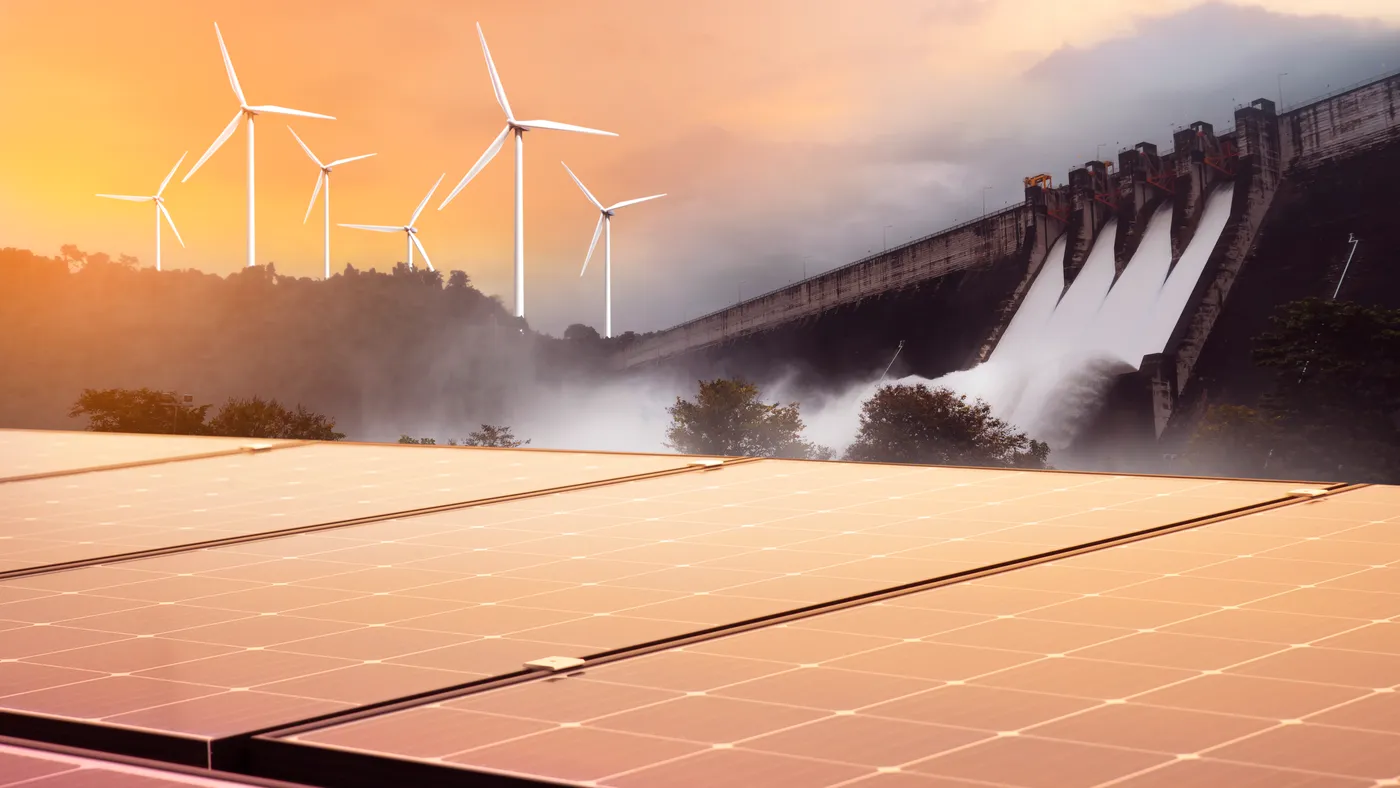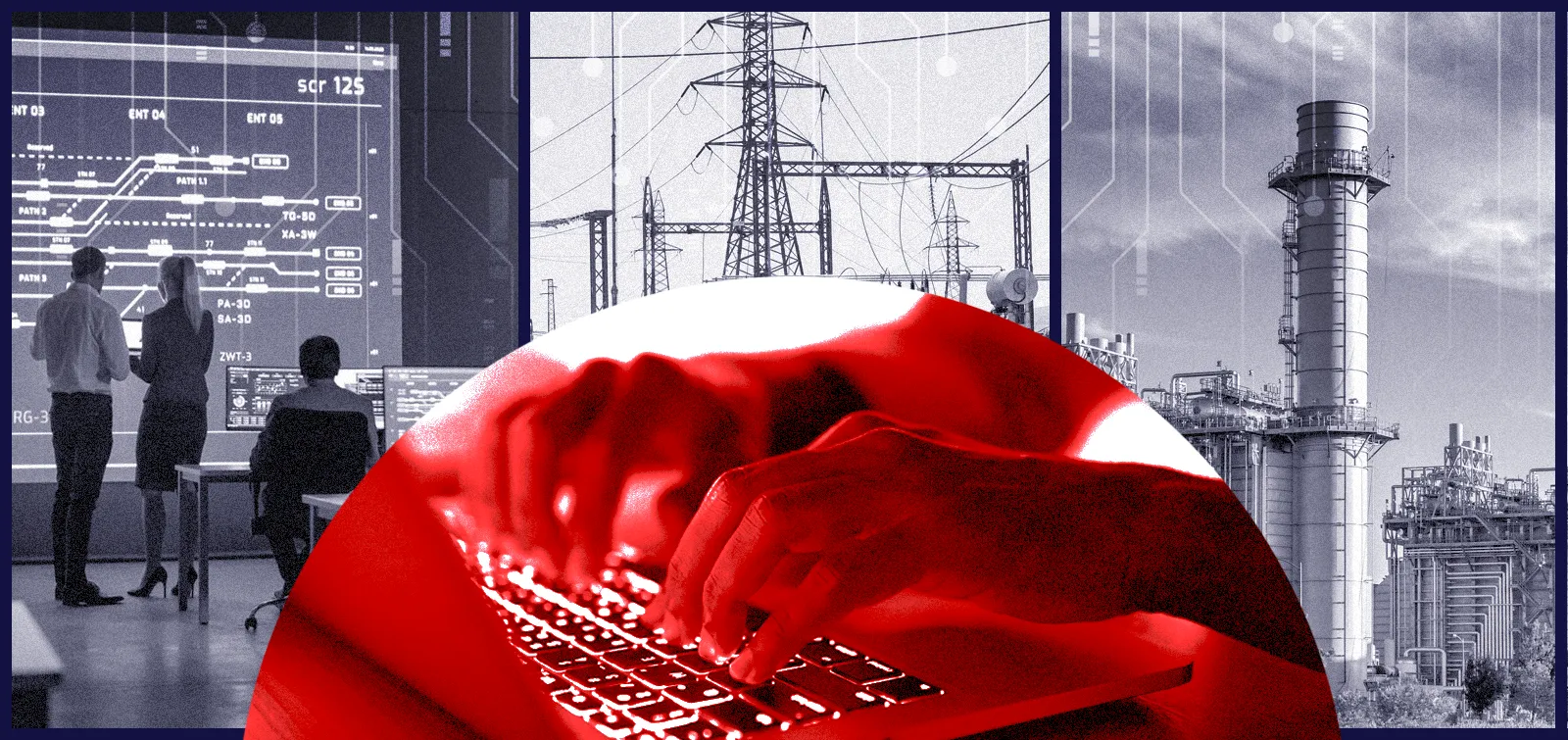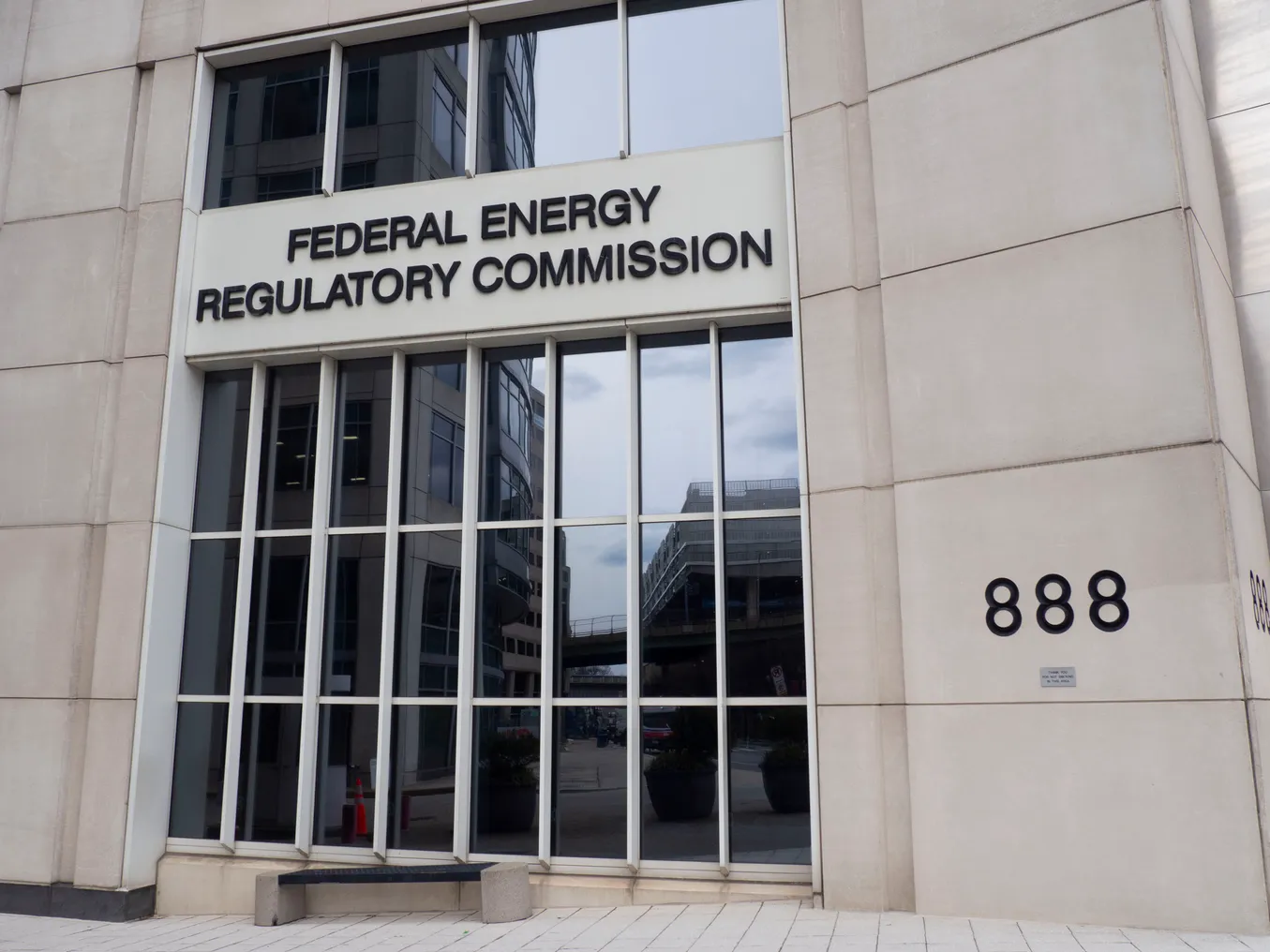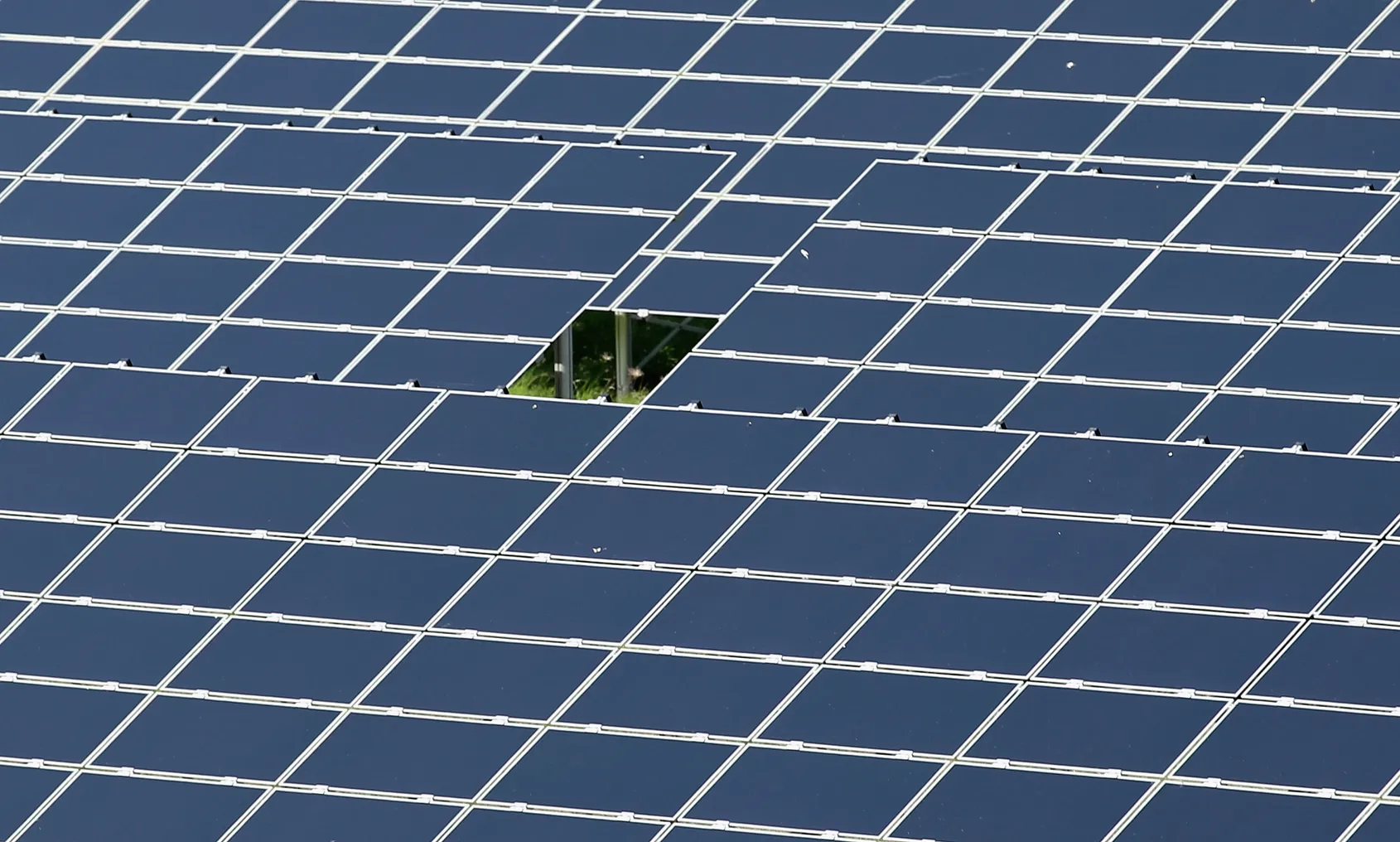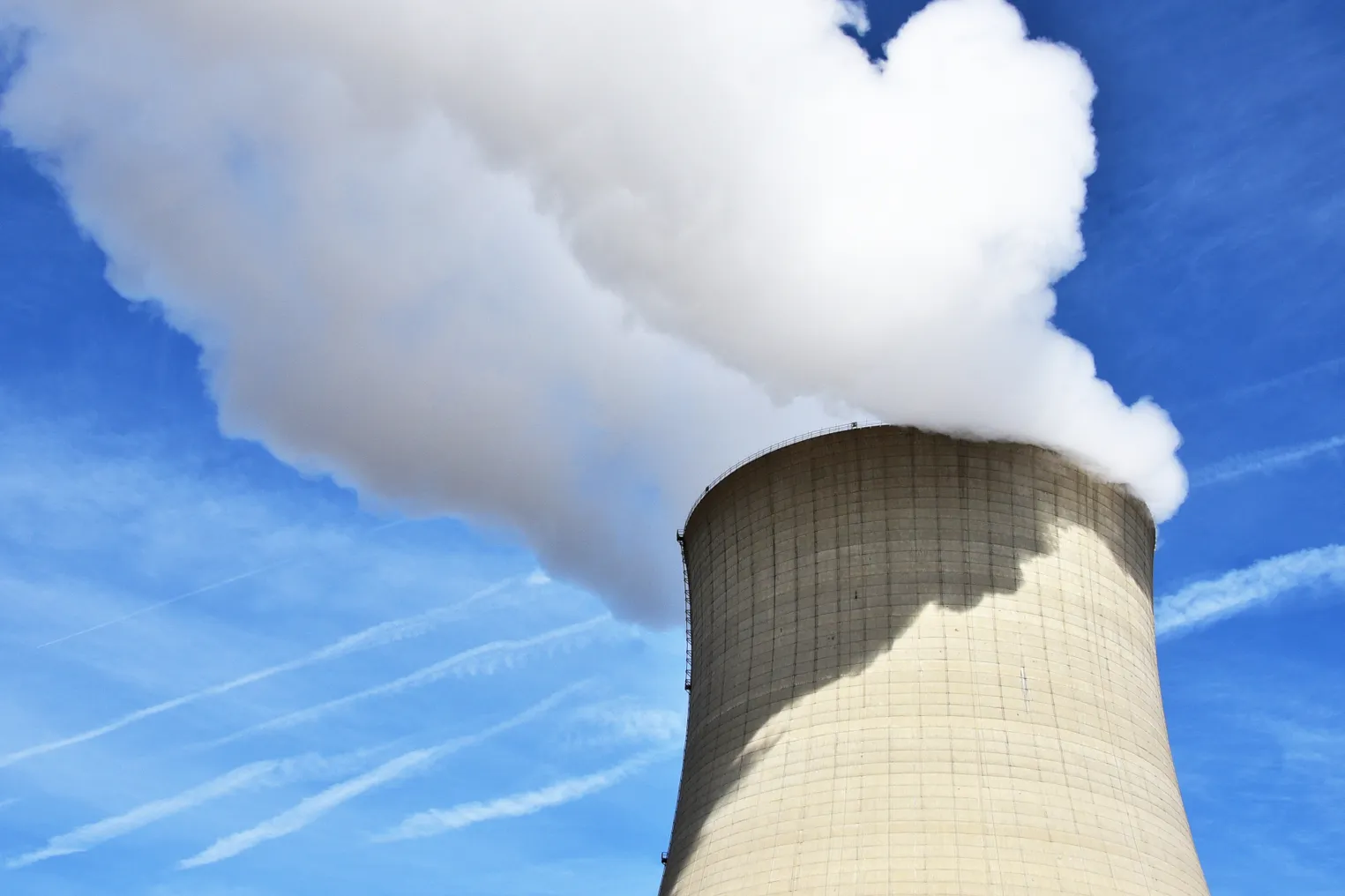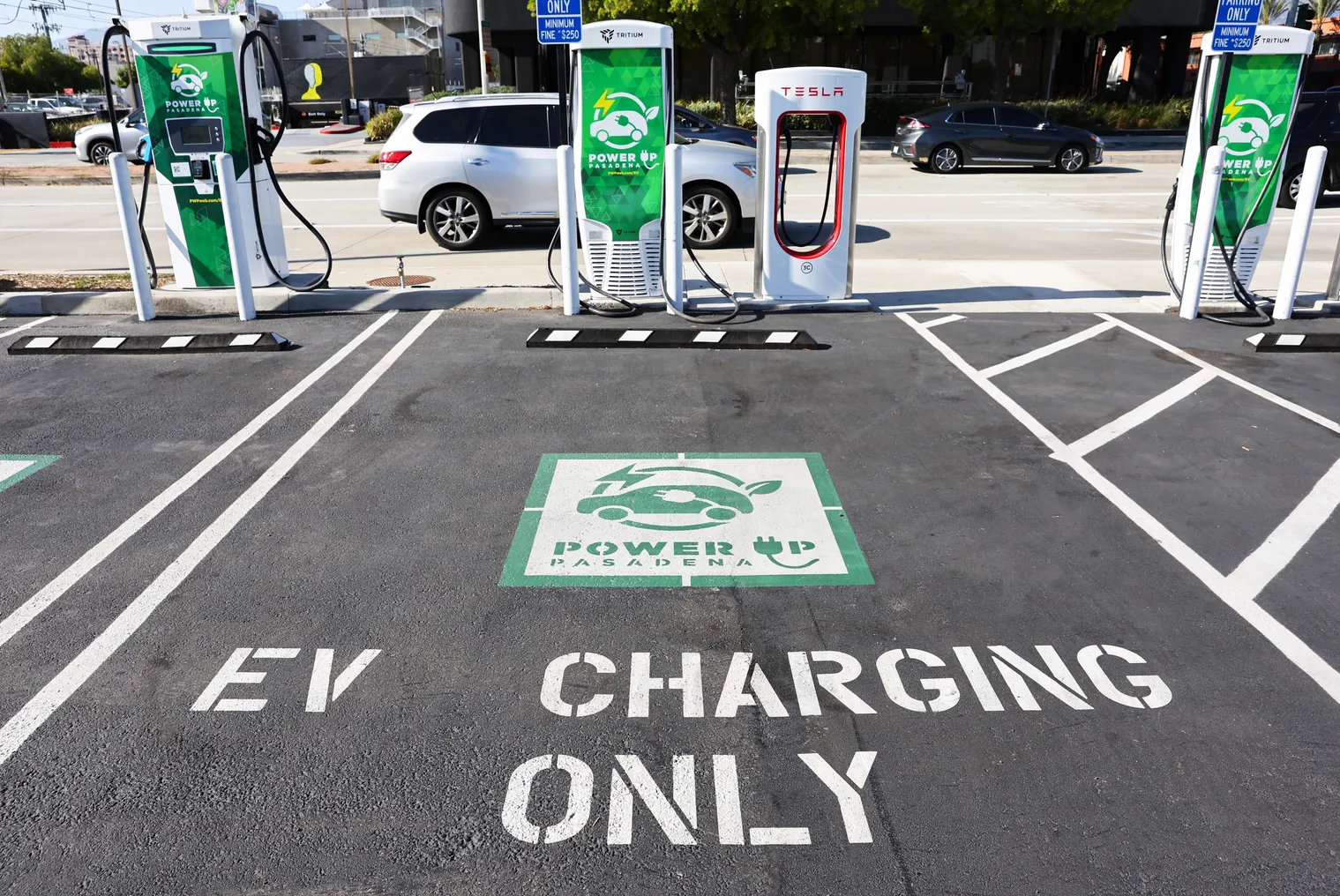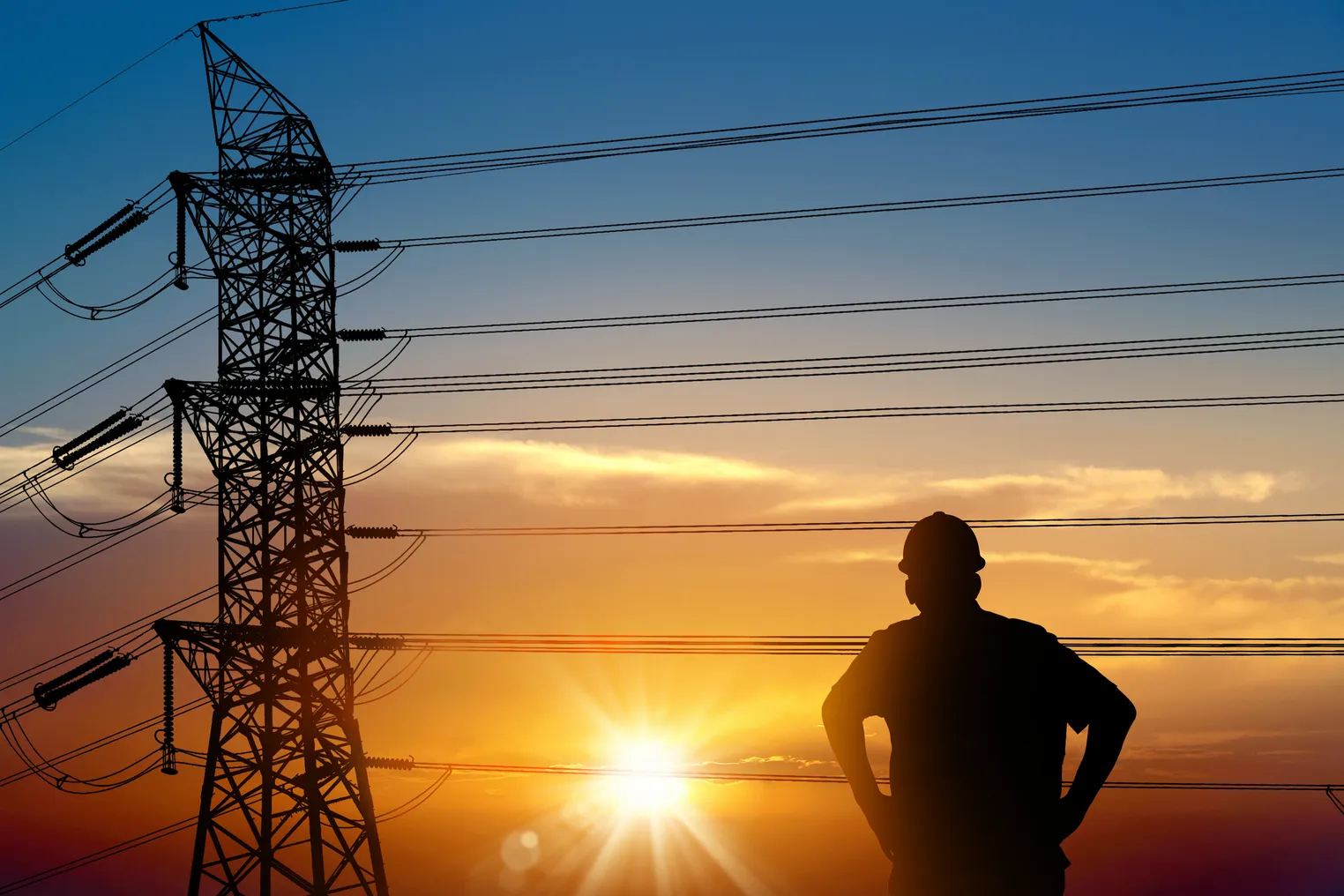
2023 Outlook: US power sector trends to watch
The energy transition continues in the U.S with increasing momentum, but also some significant bumps in the road.
The Inflation Reduction Act and its multitude of tax credits and other incentives is expected to provide a major boost to the clean energy sector. Increasingly ambitious government and corporate decarbonization goals are also helping to drive renewable and energy storage deployments.
But ongoing supply chain difficulties, inflation, rising interest rates and an anti-dumping solar trade case have put a crimp in the sector’s overall growth trajectory.
The Federal Energy Regulatory Commission, the Department of Energy, grid operators and others are dealing with numerous other challenges as well, including how to get more transmission built and improve the process for interconnecting new resources to the grid.
While 2022 didn’t see the type of grid disruptions Winter Storm Uri caused in 2021, reliability concerns persist in many parts of the country, and it is unclear if sufficient resources exist to meet power demand, especially in extreme weather conditions. Recent high-profile attacks on substations in Washington and North Carolina have also raised the spotlight on both cybersecurity and physical grid security. Federal regulators may consider new security rules, and there is a growing focus on vulnerabilities in distributed energy resources and supply chains.
Meanwhile, electric vehicles are seeing rapid sales growth, but that sector faces key questions about how tax credits in the Inflation Reduction Act will be implemented and how a nationwide network of charging stations will be built.
Below is a high-level look at some of the major trends shaping the U.S. power sector in 2023.
FERC: Transmission tops the agenda after Glick’s exit leaves the agency shorthanded
The Federal Energy Regulatory Commission starts the year down a commissioner and with a new leader, acting Chairman Willie Phillips.
Having only four commissioners could slow action on more contentious issues at FERC, such as revising its policies for reviewing proposed natural gas pipelines and liquefied natural gas projects, according to observers. However, the vast majority of FERC decisions are unanimous, so the agency should be able to continue advancing most of its cases, they say.
The agency appears poised to act on two proposals that have completed the public comment process: regional transmission planning and cost allocation and generator interconnection. Both proposals could help speed the connection of planned renewable energy facilities to the grid.
FERC will also likely continue to focus on grid reliability and resilience, a priority for Phillips, who formerly worked at the North American Electric Reliability Corp., which oversees grid reliability.
Other issues FERC may tackle include interregional transmission planning, its backstop siting authority and the risks extreme weather poses for grid reliability.
FERC will likely continue to have a heightened sensitivity to how its decisions affect consumers, according to Christine Tezak, managing director at ClearView Energy Partners, a research firm.
In a period of inflation, rising interest rates and high commodity prices, “the idea of incremental rate impacts becomes more intense, and so I don't expect that to decline over the next year,” she said.
Congress: Divided legislature dims the outlook for action on energy
With the Senate controlled by Democrats and the House run by Republicans, observers doubt the 118th Congress will pass significant energy legislation this year.
Even on issues like permitting reform, which in the past had bipartisan support, Democrats and Republicans will likely be divided, according to Tezak. House Republicans will likely try to show they are in line with positions taken during the Trump administration, and given divisions in Congress last year, bridge-building between the parties appears doubtful, she said.
House Republicans intend to hold hearings to review the implementation of the Inflation Reduction Act and the Infrastructure Investment and Jobs Act, which includes billions in spending on the clean energy sector, according to Tyson Slocum, energy program director at Public Citizen.
Top priorities for Cathy McMorris Rodgers, R-Wash., chair of the House Energy and Commerce Committee, include grid reliability, strengthened energy supply chains and permitting reform, she said last month.
Sen. Joe Manchin, D-W.Va., remains chairman of the Energy and Natural Resources Committee. Manchin’s support was key to passage of the Inflation Reduction Act. He also played a key role in ending former-FERC Chairman Richard Glick’s tenure at the agency.
Cybersecurity: New regulation, rules possible amid rise in physical attacks
Amid the war in Ukraine and the continuing rise in ransomware, there was much talk in 2022 of cybersecurity and what threat hackers may pose to electric grid reliability. Yet it was a pair of physical attacks, resulting in thousands of outages on either side of the United States, that caught the industry’s attention in December.
“The physical substation attacks towards the end of last year raised the alarm bell,” Jason Christopher, director of cyber risk at Dragos, said in an email.
Multiple substations in Washington were damaged on Dec. 25, leading to more than 14,000 outages on the Tacoma Power and Puget Sound Energy systems. And a North Carolina firearms attack on multiple substations earlier in the month knocked power out to about 45,000 Duke Energy customers.
There are practical limits to physically defending remote substations, but “the industry should expect further regulatory inquiries and potential actions from the federal government in response,” Christopher said.
While physical attacks grabbed headlines, the cybersecurity threat is growing and experts say the rise of distributed energy resources creates a larger attack surface.
FERC is considering developing new cybersecurity rules for DERs on the bulk electric system, and the Department of Energy is funding “next-generation” cybersecurity research, development and demonstration projects.
Despite efforts to secure the grid, the biggest cyber threat to the power industry in 2023 will be “supply chain attacks, especially those that come through software,” said independent security consultant Tom Alrich. “These are currently the least understood of cyberattacks.”
Electric utilities “should be prepared for the increasing sophistication of supply chain compromise threats,” Roya Gordon, a security expert at Nozomi Networks, said in an email.
The North American Electric Reliability Corp. has scheduled a meeting in February and its Compliance Committee and Technology and Security Committee are both scheduled to make presentations. “Let’s be on the lookout for further NERC guidance after their February meetings,” Gordon said.
Reliability: Extreme weather, supply chain constraints and plant retirements will continue to pose challenges
Grid reliability continued to be a key priority and challenge for regulators and utilities across the country last year, although experts say that the power sector managed to avoid a worst-case scenario like the widespread blackouts and more than 200 deaths that occurred in Texas as a result of Winter Storm Uri in 2021.
Looking to 2023, power systems will face three main challenges when it comes to grid reliability, Arne Olson, senior partner with Energy and Environmental Economics, said in an email. First, extreme weather conditions beyond what has been planned for in the past, especially heat waves, which can lead to high electric loads, as well as wildfires and storms that can damage generators and transmission lines. At the same time, the continued retirement of firm generation, largely coal and natural gas, will pose challenges, he said. And then there are ongoing supply chain-related challenges that can delay the development of resources to replace the retiring generation.
Extreme weather-related grid challenges vary by region. California, for instance, experienced a 10-day, record-breaking heat wave that required the state to call on the gigawatts of energy storage it has been adding to its grid as well as demand response. In the New England region, meanwhile, the big question for energy planners is “how we’re going to get through this upcoming winter,” Caitlin Marquis, managing director at Advanced Energy Economy, said last month.
“I think part of it is trying to manage through unforeseen disturbances or unexpected cold snaps — long-duration cold events,” she added.
Utilities and regulators are working to combat these challenges in different ways. Many utilities are updating their load forecasts and analyzing how high their electric loads could be based on potential heat wave scenarios, according to Olson.
“Utilities and regulators have also needed to be flexible with timelines and contract re-openers for near-term resources that are experiencing delays in development. And in some cases we have seen delays in the retirement of firm resources,” such as the 2.2 GW Diablo Canyon nuclear plant in California, he added.
Power sector stakeholders are also continuing to pursue solutions for greater regional collaboration in the West — like the California Independent System Operator’s extended day-ahead market — which could have significant potential to alleviate some reliability concerns, according to Olson.
Renewable energy: The sector is poised for more innovation, growth and tumult after the Inflation Reduction Act
The renewable energy sector received a massive boost with the August passage of the Inflation Reduction Act, setting up 2023 to be a year of both expansion and continuing growing pains as companies take advantage of billions of dollars in tax credits while dealing with ongoing challenges.
“The IRA is fantastic,” said John Smirnow, the Solar Energy Industries Association’s general counsel and vice president of market strategy. “We're already seeing a renaissance in American solar manufacturing — billions of dollars of new manufacturing investments. We think those announcements are going to accelerate as we go into the new year,” he said in December.
The solar industry saw declining growth throughout 2022 due to ongoing global supply chain disruptions in addition to the enactment of the Uyghur Forced Labor Prevention Act, which caused some solar module imports to be held at the border. Uncertainty about future imports due to a tariff circumvention investigation by the U.S. Department of Commerce also impacted growth.
As a result, the increase in demand for solar projects comes at a time when the industry’s supply chain remains uncertain, though the industry has committed to building up domestic manufacturing. Solar company Hanwha Q Cells announced Jan. 11 that it will commit $2.5 billion to expanding its solar production in Georgia.
As domestic manufacturing of solar expands, the industry is transitioning from passivated emitter and rear contact, or PERC, cells to the more efficient tunnel oxide passivated contacts, or TOPCon.
“Within a few years, we expect to replace PERC as the dominant technology with things like heterojunction and TOPCon,” said Becca Jones-Albertus, director of the Department of Energy’s Solar Energy Technologies Office.
Robyn Beavers, CEO of smart grid services company Blueprint Power, said that she sees the renewables sector undergoing both incremental and disruptive advancements in the coming years, including an “explosion” of offshore wind thanks to floating wind turbine advancements, more efficient solar, and artificial intelligence applications for predicting energy demand and ensuring grid stability.
Hydrogen: Experts expect major growth in 2023
There’s no question that 2022 was a landmark year for the hydrogen industry. First the 2021 bipartisan infrastructure law, which created the $8 billion hydrogen hub program, rang in the new year. Then the Inflation Reduction Act and its first-ever tax credits for low-carbon hydrogen production followed.
2023 should be the year we see the real impact of these new laws. Experts say the wave of project announcements spurred by 2022’s policy developments is likely to arrive this year.
“If you look at the announcements in the past year, it shifted from a few particular projects in the 10-50-MW range to now many in the 100-MW range,” said Dave Edwards, director and advocate for hydrogen energy at Air Liquide, one of the nation’s largest producers of hydrogen.
Air Liquide’s plans focus on the transportation sector. The primary opportunity, Edwards said, is in heavy-duty trucking, with several companies poised to release hydrogen-fueled models in the next 12-18 months.
The creation of a production tax credit, or PTC, for low-carbon hydrogen has also spurred talk of new projects and upgrades to hydrogen production facilities around the nation.
“With the PTC, industry is going to want to start putting steel in the ground, so we’re going to see a lot of industry stakeholders collaborating and potentially developing road maps” for new and existing facilities,” said Nick Connell, policy director for the Green Hydrogen Coalition.
For questions about siting, hydrogen developers are looking to the U.S. Department of Energy, which is expected to designate six to 10 federally-backed “hydrogen hubs.” Applications for hub status are due by April, and the DOE’s decision is expected sometime in the summer or fall.
So far, the DOE has issued positive recommendations to 33 of 79 hydrogen hub applications, including concepts for the Western Interstate Hydrogen Hub, comprising Colorado, Utah, New Mexico and Wyoming, and from the Pacific Northwest Hydrogen Association in Oregon and Washington.
“When we look back on 2022 and 2023, they will be the years where we saw the transition in hydrogen from exploratory, small scale, regional planning, to large-scale deployment of an industry,” Edwards said.
Energy storage: Rising demand, federal tax credits point to strong growth in 2023
By nearly any measure, energy storage is expected to expand significantly in 2023 following robust growth in 2022.
As governments at all levels and companies broaden their carbon reduction goals, demand is rising for storage to hold energy produced by intermittent resources such as wind and solar. Developers and power plant owners plan to increase utility-scale battery storage capacity in the U.S. nearly fourfold in the next three years, reaching 30 GW by the end of 2025, according to the U.S. Energy Information Administration.
Meanwhile, thermal energy storage could boost long-duration energy storage capacity globally to between 2 TW and 8 TW, from a range of 1 TW to 3 TW by 2040, according to a November report by the Long Duration Energy Storage Council and McKinsey and Co.
The Inflation Reduction Act signed into law in August is expected to give a boost to large-scale battery storage projects in the U.S. Standalone storage systems will be eligible for a 30% investment tax credit — and up to 70% with additional incentives.
With the investment tax credit subsidy for standalone energy storage, batteries don’t have to be paired directly onsite with solar PV generation to be eligible for an approximately 30% cost reduction. Previously, energy storage projects could claim the tax credit only when installed with a new solar generation facility and to the extent the storage project was charged at least 80% by the solar facility.
“There’s never been a better time to be in storage,” Susan Babinec, program lead, stationary storage at Argonne National Laboratory, said in an interview. "Commercialization is taking off. It's becoming an actual industry, which is amazing to watch."
Investors and researchers are taking more interest in storage, and government is “catalyzing public-private partnerships” to boost domestic manufacturing, she said.
While there is significant momentum behind storage, supply chain problems persist. George Crabtree, director of the Joint Center for Energy Storage Research at Argonne National Laboratory, said the price of lithium-ion batteries was up 7% in 2022 as demand outpaced supply. Supply-demand imbalances will likely continue for several years, he said.
Nuclear power: Advocates see gains in 2023 as critics cite costs, potential safety hazards
New sources of financial support, along with expanded action at the state and federal level, are giving a lift to nuclear energy as policymakers increasingly look to curb greenhouse gas emissions.
The industry is struggling to grow in the U.S., but Christine Csizmadia, senior director of state policy and advocacy at the Nuclear Energy Institute, said several states are broadening policy that advances nuclear energy such as by approving studies of small modular reactors, providing tax incentives for nuclear power plant construction and ending moratoriums on new plants.
"This is a brand new time," Csizmadia said, referring to increased interest in nuclear power. “We've never deployed new technology in the market like this."
Detractors of nuclear plants, particularly of SMRs, cite safety risks, rising costs and other concerns. Critics also caution that widespread nuclear generation in the U.S. is years, maybe even decades, away despite advances in SMRs and the policy shifts favoring nuclear.
The bipartisan infrastructure law included the $6 billion Civil Nuclear Credit Program to help preserve the U.S. reactor fleet. The first potential beneficiary is Pacific Gas & Electric Co.’s Diablo Canyon plant, with one unit slated to retire in 2024 and a second the following year. In November, DOE conditionally awarded PG&E $1.1 billion under the nuclear credit program to help keep both units open.
Cale Jaffe, director of the Environmental Law and Community Engagement Clinic at the University of Virginia School of Law, said at a Dec. 15 forum discussing SMRs in Virginia's coal fields that a political consensus is forming in favor of nuclear power "in a way that we haven't seen" in years.
EVs: Continuing rapid growth of adoption will depend on implementation of federal programs, utility interconnections
Electric vehicle sales roughly doubled in the past year and could double again in 2023, say industry experts. While that growth trajectory is not sustainable over the long term, they say the next 12 months will be key to continuing the transportation electrification trend as billions in federal incentives begin to hit the market.
Along with other investments, the bipartisan infrastructure law of 2021 provided $7.5 billion for a national network of 500,000 electric vehicle chargers while the Inflation Reduction Act extended federal tax credits for vehicle purchases. How those incentives are implemented will make a difference in how quickly the U.S. can reach its goals, say analysts.
“There's an incredible amount of opportunity and momentum,” Electrification Coalition Executive Director Ben Prochazka said. The group advocates for policies to speed the adoption of plug-in vehicles and sees the federal incentives as key accelerators in the industry.
EVs as a percent of new vehicle sales have risen from around 2% in 2020 to more than 6% in the third quarter of 2022. Optimistically, EV sales could reach 10% this year, said Joe Britton, founder and former executive director of the Zero Emission Transportation Association.
“Obviously, I don't know that we can keep doubling every year, but we're going to see a ton of growth,” he said.
Over the next few months, Britton and Prochazka both expect the EV sector to be focused on how vehicle purchase credits are structured. Proposed guidance on the new sourcing provisions for the clean vehicles credit is expected in March, along with a notice of proposed rulemaking.
And the first tranche of funding for a national charging network is now rolling out to states, which are in the process of creating requests for proposals “so that they can get the companies ready and contracted to be able to build out the infrastructure network,” Prochazka said.
One possible stumbling block is the electrification of new charging stations. Delays caused by labor and equipment shortages are stretching some project times out by months.
Charger development times are now about 18 months, from station conception to energizing stalls, EVGo CEO Cathy Zoi said during the company’s third-quarter earnings call in December. Development time had been about 12 months, but delays on the utility side are stretching schedules, she said.
There is a “utility work backlog associated with transformer shortages,” Zoi said. “When we're building the configurations that we're building now, which is ultrafast 350-kW chargers with more stalls, that almost always requires a transformer upgrade.”

